How To Use Daniel Smith’s Watercolour Sticks
I was delighted to be asked to do a product review of the 11 new colours added to Daniel Smith’s watercolour stick range. As a professional artist I find the sticks are an excellent complement to Daniel Smith’s tube watercolours. They are great for adding bold linear marks to compositions. In this article I will also share with you how I use Daniel Smith watercolour sticks in my work.
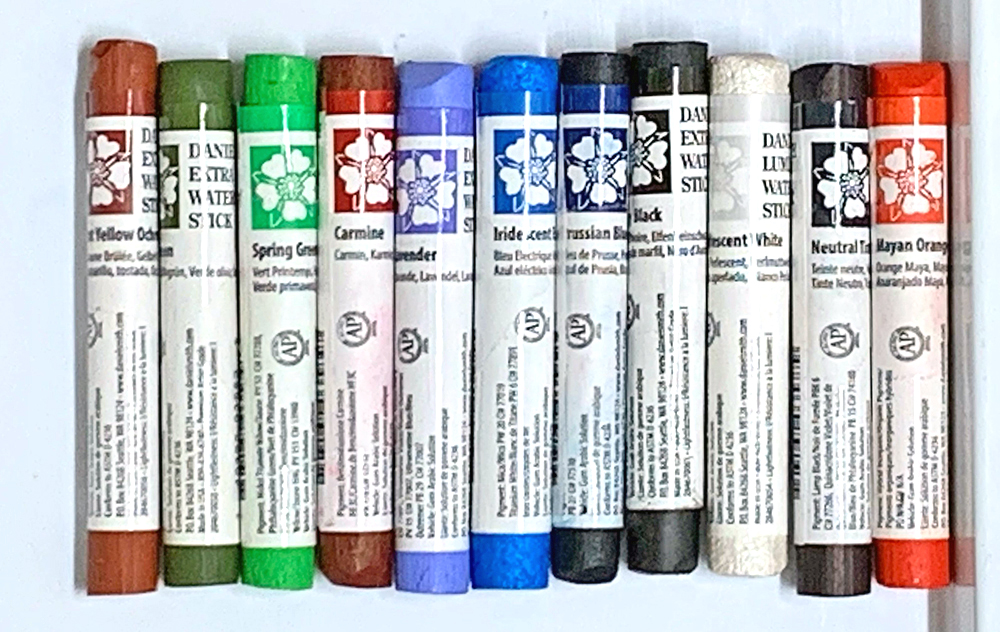
Daniel Smith Watercolour Sticks are manufactured using the same pigments as their Extra Fine Watercolour Paint Tubes. Both formats are artist quality paint. The beauty of the sticks is that they are portable making them easy to use out of the studio. Used directly onto a surface or as a traditional pan, means that they are versatile too.
Of the 11 new colours, all but two are rated as permanence I (Excellent) for lightfastness. Mayan Orange and Carmine, are rated as II (Very Good).
Dry stick on dry paper
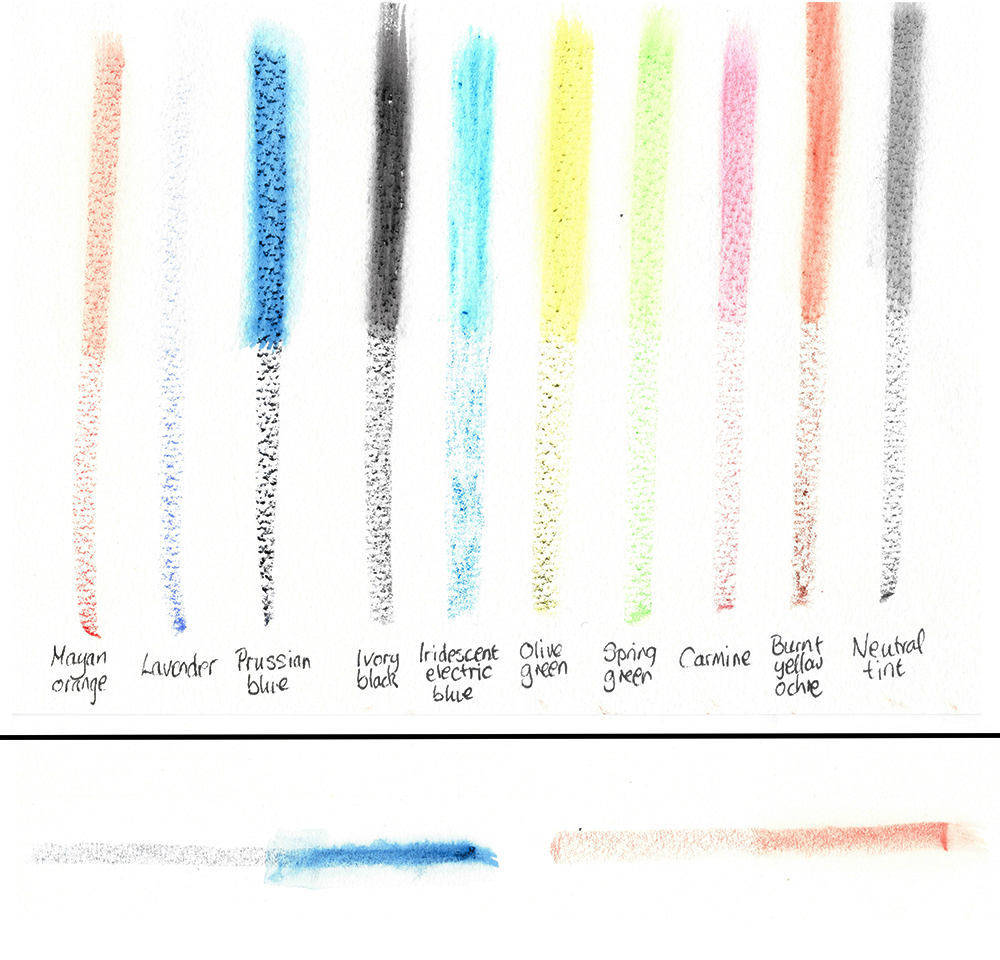
I first tried the sticks dry, on dry paper. The marks appear broken, reminiscent of dry brush marks. The image above shows vertical dry marks on Saunders Waterford rough watercolour paper. For comparison I have also shown two horizontal strokes on HP (smooth) paper. Half of each stroke has been painted over with a wet brush. Adding water with a brush disperses some of the pigment, but the initial dry marks don’t usually disappear.
Wet stick or wet paper
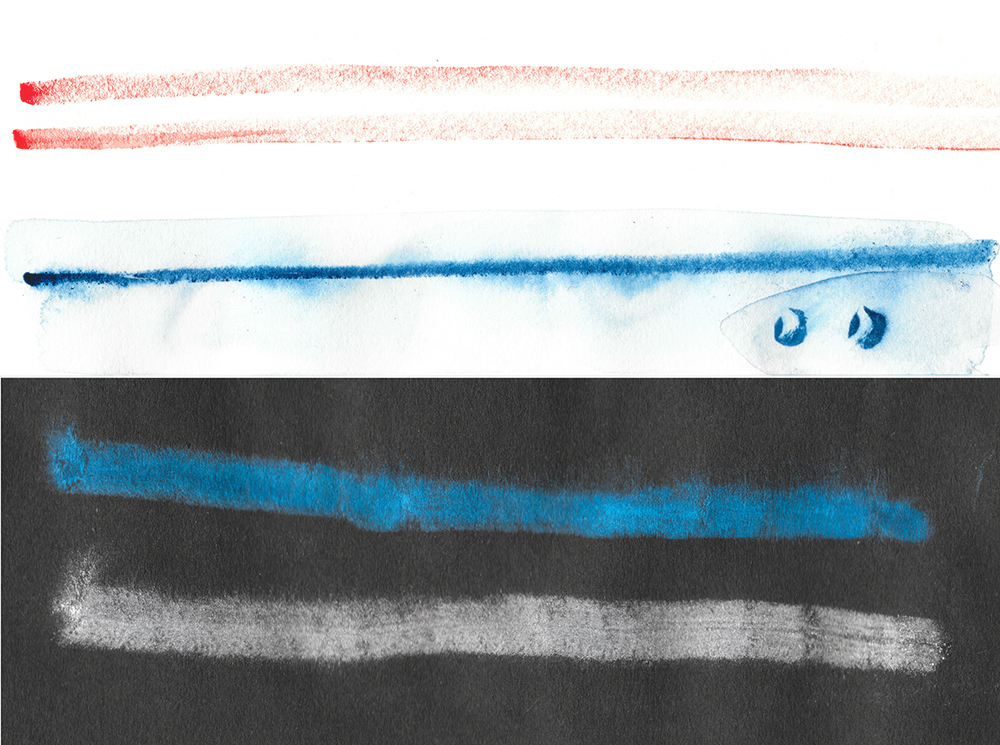
Next I used a wet stick on dry paper. I apply water to the stick with a brush. The top lines (Mayan Orange) here were applied wet-on-dry. The line was drawn from left to right and the water has only affected the first part of the stroke.
The Prussian blue line was made dry-on-wet. The roundish marks were made by stamping the end of the stick on wet paper.
Wet paper may be wet from a previous wash, or wetted specifically to use the sticks. If there is an underlying wash that is wetted to apply the stick, the wetting and friction from drawing the stick over the paper may cause some disruption of the underlying wash.
The two colours that I was provided from the ‘Luminescent’ range – Pearlescent White and Iridescent Electric Blue – are shown applied to wet black paper. The Pearlescent White has a slightly crumblier texture in comparison to the other stick colours but this does not effect its performance.
Randomised marks
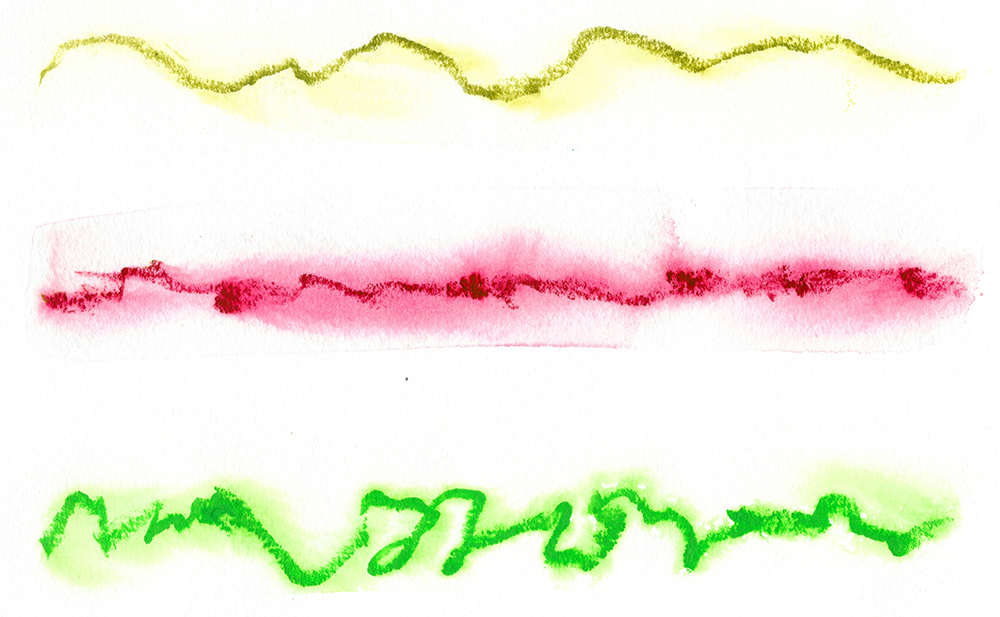
As well as simple direct marks, more randomised marks can be made on wet paper.
Here the first (Olive Green) line was made by holding the stick between thumb and the first two fingers. I then rolled the stick with my thumb as I drew the stick across the paper.
When the stick has a flat end, as when new, different width marks can be made by varying the point of contact on the paper or the direction of movement of the stick. In the second line (Carmine) I have changed the angle of contact between the stick and the paper as I moved the stick across the paper.
The final line using the Spring Green stick mixes up both of these techniques.
Mixing it up
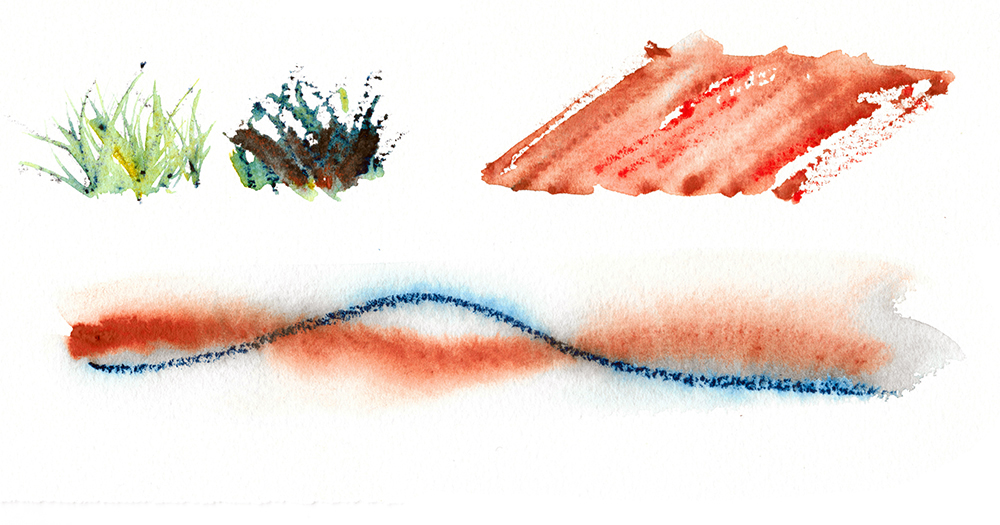
Of course you can mix the stick colours, and mixing dry and wet mark making techniques gives textural variation. In the top row leftmost example I used a bit of Nickel Azo Yellow tube watercolour wash on a brush to wet some dry Prussian Blue marks to produce a green. In the second example I applied a wash first, then drew out colour with the Prussian blue stick. The top right example has a mix of dry on dry marks, some subsequently wetted, and wet-on-wet.
Alongside conventional watercolour
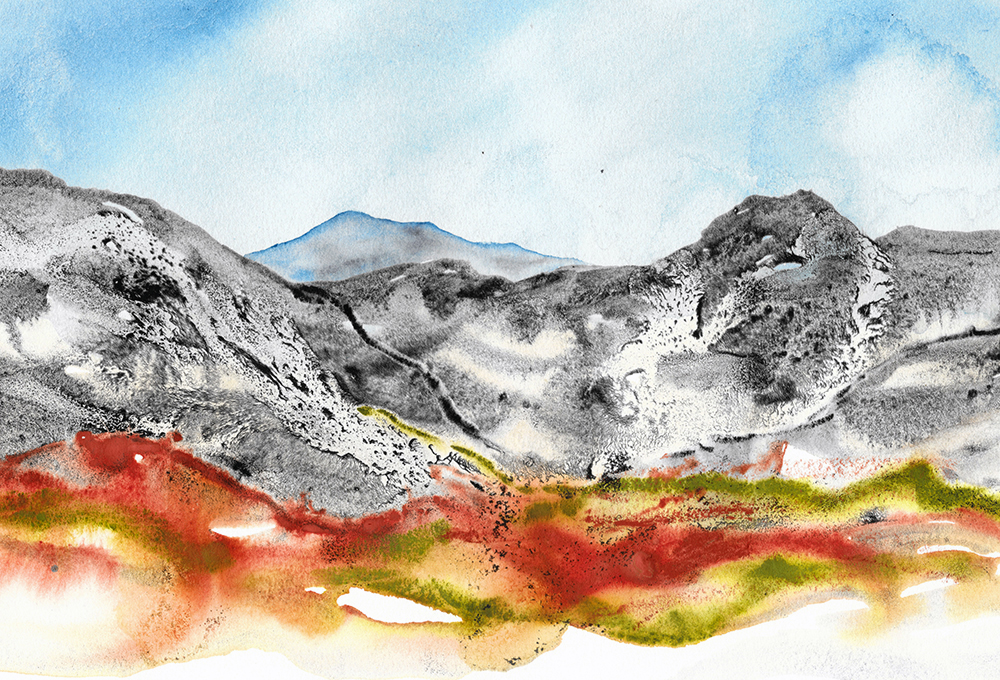
In this painting I have used a highly granulating tube colour – Hematite Genuine, alongside Neutral Tint, Prussian Blue, Burnt Yellow Ochre and Olive Green watercolour sticks. The sky has been painted using the Prussian Blue stick as a pan colour, lifting colour from the stick with a wet brush. I really enjoyed playing with these sticks and love the way they increase the range of marks I can make in watercolour.
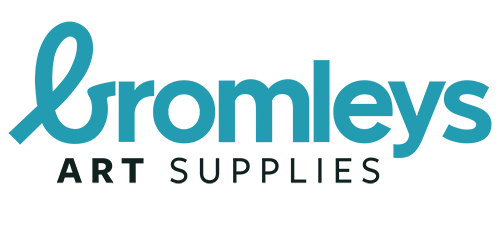


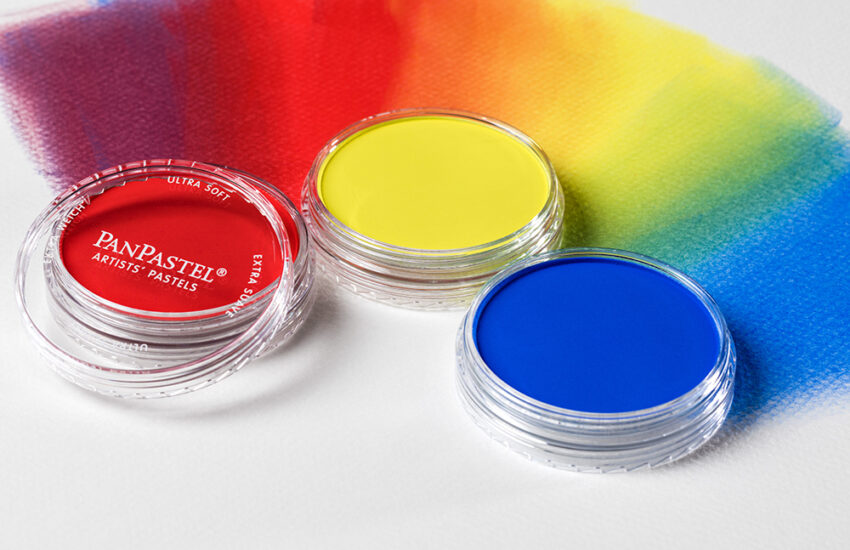
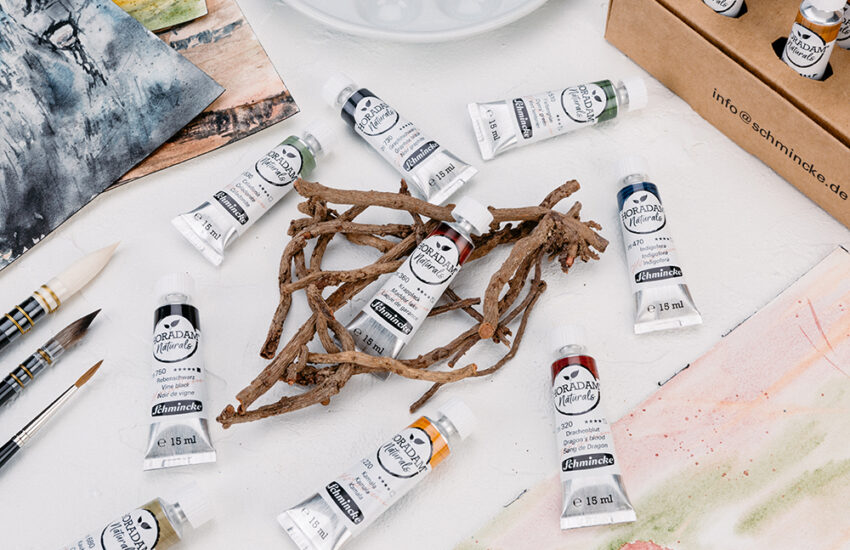
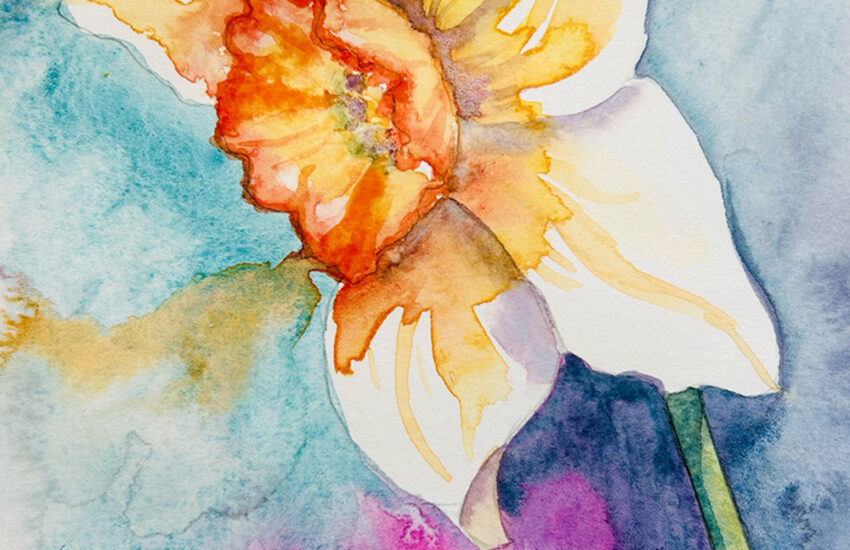
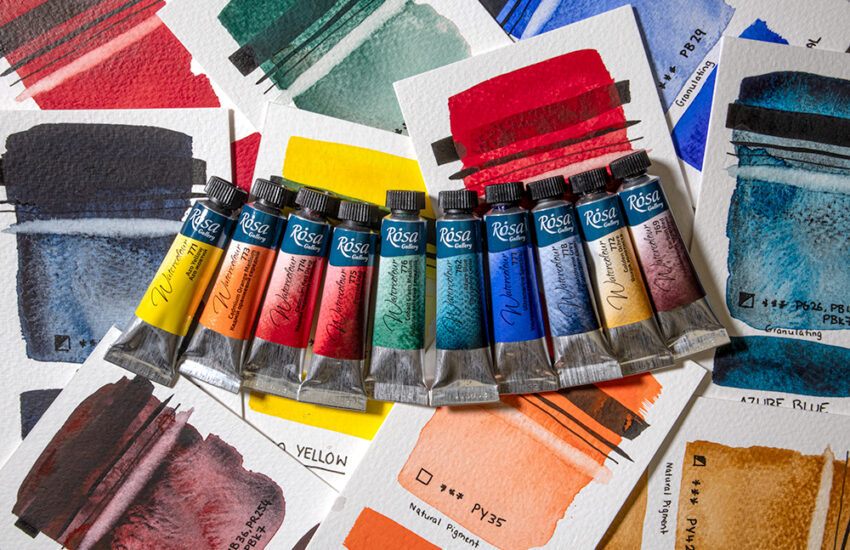


Daniel smith water colour sticks effects are vibrant and the neutral shades look great I love the effects Linda Saul’s art is truly inspirational I love the texture and the mix of colours.
Glad to hear you enjoyed the blog post Stephen!